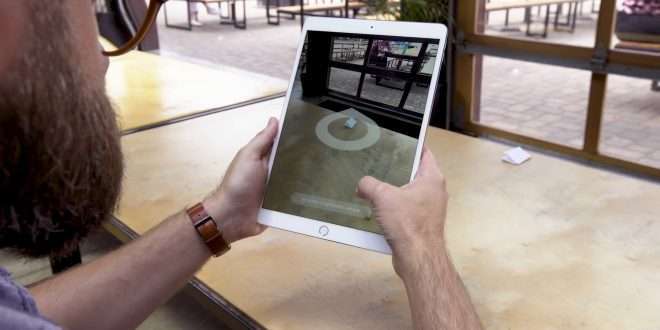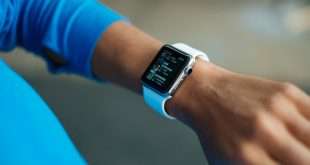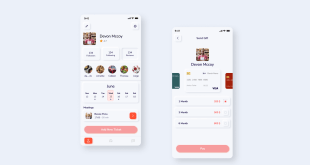In the ever-evolving world of mobile technology, UI/UX design has been a driving force behind the success of modern applications. With the rise of foldable smartphones, we witnessed a significant shift in user interactions. However, this is just the beginning. In this blog, we explore the next frontier of mobile UI/UX design, going beyond foldables, to create seamless and intuitive experiences that will shape the future of mobile applications. Let’s dive into the exciting world of cutting-edge mobile design that goes beyond the confines of conventional screens.
Embracing Versatility: Beyond Foldables
As foldable devices become more mainstream, designers are pushed to reimagine the concept of versatility. Beyond foldables, we now have rollable displays, expandable screens, and even wearables that open up new possibilities. These innovations challenge designers to adapt to various form factors and craft UI/UX that effortlessly transitions across devices. Embracing versatility ensures that users enjoy consistent experiences, whether on a small wearable or a large tablet-like screen.
Human-Centered Design: Prioritizing User Needs
The future of mobile UI/UX design lies in placing the user at the core of the process. Understanding user needs, preferences, and behaviors becomes crucial in creating impactful experiences. Designers must conduct extensive research and adopt user-centric methodologies to build apps that are intuitive, efficient, and delightful. By aligning with user expectations, applications can stand out amidst the competition.
Beyond Flat Design: Incorporating Depth and Realism
Gone are the days of flat and static UIs. To create a truly engaging experience, designers must explore depth and realism in their interfaces. This involves implementing realistic animations, 3D elements, and dynamic interactions. The use of augmented reality (AR) and virtual reality (VR) will also gain prominence in the future, blurring the lines between the digital and physical worlds.
Personalization: Tailoring UX for Individual Users
Personalization has become a key aspect of UI/UX design. Going beyond foldables, future mobile applications will be highly personalized, offering unique experiences for each user. AI-driven algorithms will analyze user behavior and preferences to deliver content and features that resonate with individuals. By tailoring UX to individual users, applications can foster stronger connections and increase user retention.
Voice and Gesture-Based Interactions
As mobile devices become more advanced, voice and gesture-based interactions are expected to dominate the user experience. Users will rely on natural language and gestures to navigate through apps, reducing the reliance on touch inputs. Designers must strategize for these interactions, ensuring seamless and accurate responses to voice commands and gestures.
Accessibility and Inclusivity: Design for All
The future of mobile UI/UX design demands a strong focus on accessibility and inclusivity. Designers must cater to diverse user groups, including individuals with disabilities. By adopting inclusive design principles, applications can accommodate all users, providing equal access to information and functionalities.
Collaborative Design: Multi-Device Experiences
With the rise of interconnected devices, collaborative design becomes essential. Designers must envision multi-device experiences where users can seamlessly switch between smartphones, tablets, wearables, and even smart TVs. Creating a cohesive and synchronized experience across these devices will be a hallmark of future UI/UX design.
Eco-Friendly Design: Sustainable Mobile Experiences
Sustainability will drive mobile UI/UX design in the future. Designers will need to consider the environmental impact of their creations and develop energy-efficient applications. Embracing eco-friendly design principles will not only benefit the planet but also resonate with conscious consumers.
Data Privacy and Security: Building Trust
As technology advances, data privacy and security concerns grow. In the future, UI/UX designers will play a critical role in building trust with users. Implementing robust security measures and transparent data practices will be paramount in earning user confidence and loyalty.
Augmented Context: Blending Physical and Digital Realms
Beyond foldables, mobile UI/UX design will explore augmented context, enriching user experiences with context-aware information. By integrating sensors, location-based services, and AI-driven insights, applications can anticipate user needs and provide real-time, relevant content.
Final words
The future of mobile UI/UX design is a journey beyond foldables, embracing versatility, human-centered design, personalization, and accessible interactions. With a focus on sustainability and data privacy, designers will craft innovative experiences that blend the physical and digital realms. As technology evolves, UI/UX designers have the power to shape the future of mobile applications, creating meaningful and seamless experiences for users worldwide.
Commonly Asked Questions
Q1: How will UI/UX design evolve beyond foldable smartphones?
A1: Beyond foldables, UI/UX design will explore versatility, with rollable displays, expandable screens, and wearables, demanding adaptive experiences across various form factors.
Q2: How can personalized UX enhance user engagement?
A2: Personalized UX leverages AI to analyze user behavior and preferences, delivering tailored content and features, fostering stronger connections, and increasing user retention.
Q3: What role will voice and gesture-based interactions play in mobile design?
A3: Voice and gesture-based interactions will dominate future mobile experiences, reducing reliance on touch inputs and providing more intuitive ways of interacting with applications.
Q4: How will inclusive design benefit mobile applications?
A4: Inclusive design ensures that mobile applications cater to diverse user groups, including individuals with disabilities, offering equal access to information and functionalities.
Q5: How can mobile UI/UX design contribute to sustainability?
A5: Mobile UI/UX design can contribute to sustainability by implementing eco-friendly design principles, creating energy-efficient applications with reduced environmental impact.
 webfily
webfily



